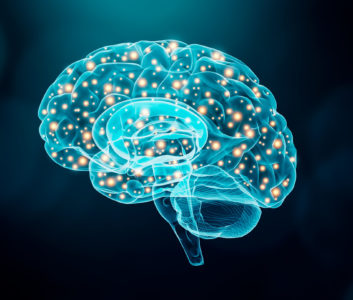 Nearly one in three adults in the US suffers from some form of chronic pain, and despite everyone’s best efforts, it’s not always easy to treat. We’re always looking for new ways to best help our patients decrease and eliminate their chronic pain, and one new treatment that is being closely monitored and tested is deep brain stimulation.
Nearly one in three adults in the US suffers from some form of chronic pain, and despite everyone’s best efforts, it’s not always easy to treat. We’re always looking for new ways to best help our patients decrease and eliminate their chronic pain, and one new treatment that is being closely monitored and tested is deep brain stimulation.
Deep brain stimulation (DBS) may sound like some futuristic medical experiment, but it’s already being used to treat some cognitive impairments. It has been successful in helping limit symptoms in conditions like Parkinson’s disease, dystonia and tremors, and now doctors are wondering if it could be useful in managing some types of chronic pain.
DBS works by implanting electrodes deep into a person’s brain in the areas that help control movement. A stimulator is also implanted in the chest, and the stimulator can help drown out problematic brain signals. The only issue is that it’s not a perfect science, and you’d like it to be perfect when you’re implanting a device in a person’s head. The electrical current relayed through the stimulators is constant, meaning it can’t adjust to what’s going on in the brain, it simply operates as a way to drown out problematic signals.
Because of this, some patients have experienced changes in personality or problems speaking, and like many treatments, the brain can get used to the stimulation and find ways to drown out the signal that is supposed to be drowning out the problematic signals. So while it’s not a perfect system, medical experts are always trying to improve it, and now they are researching whether it could be a viable option for chronic pain patients.
Deep Brain Stimulation For Chronic Pain
Researchers at the UCSF Weill Institute for Neurosciences recently received a $7.56 million, five-year grant to see if DBS could be used as a treatment for some forms of chronic pain. However, their goal is to develop the technology so that the current can be harnessed and used based on signals from the brain in real-time, instead of as a constant current.
Researchers likened the system to a space heater and a thermostat. The space heater provides constant heat, whereas a thermostat can turn the heating system on and off based on the current temperature and a desired setting. Right now DBS is a space heater, but researchers say they hope to use the grant to help develop a more thermostat-style model.
“We are trying to build a model to serve as a thermostat to control electronic stimulation to provide pain relief,” said Dr. Prasad Shirvalker, assistant professor of Anesthesiology at UC San Francisco. “We’re at the front edge of trying to open up new indications for DBS.”
Hopefully researchers can figure out how to control DBS in the most complex system in our body so that chronic pain patients can have another avenue to pursue relief. We’ll keep tabs on this research as it progresses.